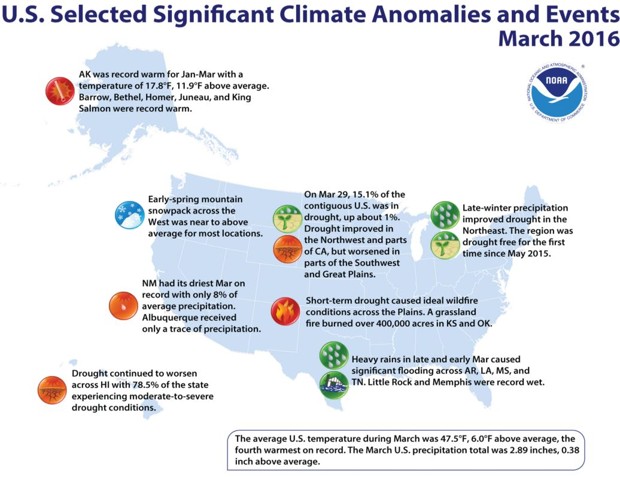NOAA: The U.S. Hits a Never-Before-Seen Milestone for Warmth
This March saw every single climate division reporting above-average temperatures.
Though you might not know it living in Caribou, Maine, things in the U.S. have been pipin’ hot. The mercury went above 100 in California last week, Texas has endured weeks of temperatures as much as 6 degrees above normal, and Alaska is likely to soon mark its warmest January-April period in known history.
Every state in the Lower 48, in fact, had above-average temperatures last month, making it the fourth-warmest March in 122 years of annals-keeping. But here’s another remarkable thing: Every one of NOAA’s hundreds of climate divisions saw abnormal heat in March, something that hasn’t happened since monitoring began more than eight decades ago.

Climate divisions are how the government slices up the country for monthly data-logging on temperature, precipitation, and other stuff—think of them like counties for long-term weather records. In a post at Climate.gov , Deke Arndt explains what a trip it was for them to all go “red”:
If you were alive during March 2016, and I’m betting you were, you witnessed U.S. history.
One stunning feature from the March 2016 temperature map was just how universally warm the month was. Every one of the 357 climate divisions across the contiguous United States and Alaska ended up—at least—in the “warmer than normal” category. That’s harder than it sounds: It means each of those divisions ended up in the top third of their own histories.
I thought that was rare, but didn’t know how rare. So I crunched the numbers back for the more than 1,000 months since the US divisional dataset reached statistical adulthood in 1930: it hadn’t happened before.
What’s to account for this supremely sweltering March? Arndt blames “unusual, and in some cases, record warmth, generally moving west to east across” the nation.




